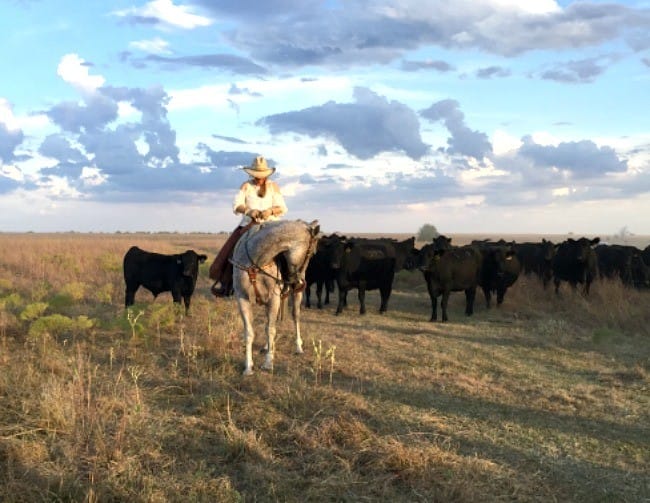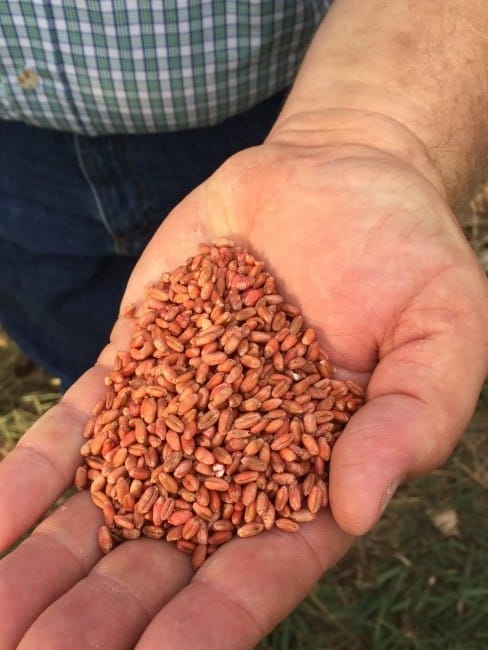
We can’t feed the world with small farms nor can we meet the needs of the world and their wants with small farmers. There are two main issues when it comes to food; the first is need and second is want.
When was the last time you sat down for dinner and thought about where your milk or your potatoes came from? Not many people actually give it a second thought. Oh, it has become more center stage lately with the advent of farm to table and eating local, but still, too many people have no idea where their food comes from or how it is produced.
When we think of need, we think of feeding the world the best we can, while sustaining the planet. How do we feed those who are starving, those with little to no money, and those who don’t know how to prepare or cook food? In no way is it logical to believe that by converting to small local farms we can feed the masses, nor is it possible to teach the world to cook.
Peoples’ wants is less of a concern for me as it varies from household to household. I want to feed my family organic, local, sustainable, real, whole, and fresh food. My friend wants to feed her family food that is easy and fast and another friend wants to feed her family food that is healthy, but budget-friendly.
Then, there is the bigger issue of food needs and food education. There are those of us who can meet our wants, but there is a greater number of people we need to think about, so the focus shifts to needs. I truly believe that after a recent farm tour in Kansas of all types of farms and after doing a ton of reading over the years, that my attitude towards the food of the world must change.
As I sit here, my recent trip to Kansas with the Kansas Farm Bureau is weighing very heavily on me. I have a ton to share, but for now here are my top 10 take aways:
- Many GMOs crops are not what I thought they were. I am still learning more, but they are not as evil as I previously assumed. Many GMO crops are simply created to sustain the land and water and to eliminate the need to spray pesticides that both destroy our world and pollute our water table. There is something to be said about technology advances to sustain the planet, while maintaining the nutritional value of the food.

- Dairy cows are not in small “milking pens” all day. So you know, those pictures we see of cows with their heads poking out of metal bars and if you are like me, assumed the other end was hooked up to a milking machine. FALSE. I had the opportunity to visit McCarty farms. More about them soon, but for now, you need to know what I thought was wrong. These beautiful ladies live in small groups and have large areas they rotate through. Cows are so social. We walked into one of the barns before the ladies were going to be milked and the barn went from cows enjoying their day to them coming to the fence and poking their heads out to check us out. Truth is, those pictures you see are not the whole story!

- The level of antibiotics is ZERO in milk tested. Yes, the cows get antibiotics like we do, when we need them. If a cow gets sick or has a cut that needs to be treated, they are moved to the hospital barn and given antibiotics. There, milk is not used for human consumption and after the required number of days off the antibiotics and their milk tests clean, only then are they reintroduced to their group.
- Milk cows are over bred, again not true. It is not economical, humane, or useful for farmers to over breed their herds. The healthy number of times for a cow to breed is 3-4 times and that is what the dairy industry does. And wait until you hear about that whole process in a post later, it is amazing.
- Organic food is expensive to many, conventional food is expensive to many, and labeling all our food will cost an extra $500/ family. Now let me put that into perspective. A family of four living in poverty puts $3700 towards food a year. I spend over $1000 A MONTH for food just for my husband and me. When the twins are home that doubles! $500 to me is a week of groceries. For a family in poverty that is nearly two months of groceries. We, as a society, cannot sustain the increase in cost of food to meet labeling needs. GMO labeling is necessary with the Right to Know Act, but it is state to state and we need to figure out a way to maintain high farming processes, while providing information.
- Organic certification is not advanced enough yet to certify hydroponic farming. Yup, you got it. Here I thought the organic certification guys were all up to date and fancy. Truth is they are not advanced enough to certify anything that does not grow in dirt. Another reason you need to ask a farmer.

- 97% of the farms in the US are family farms; not corporate owned! And here I thought big business was taking over our farm industry.
- There are only 8 GMO crops in the world and only 6 of them are in production. Here, we are labeling everything GMO free when many of the food products would never have been GMO in the first place.
- The Farm Bureau is not funded by the corporate giants, it is funded by membership dues of farmers and ranchers; another misconception I had. Here, I was thinking why would they ever want to host someone like me. I consider myself pretty well-educated and well-informed, but I let others influence me. Join me and stop with perceptions and let’s go to the source. Now, specific campaigns may receive corporate donations, but in NO way do corporations influence or determine Farm Bureau business; it is member driven.
- There are bad people everywhere. Yes, there are farmers not doing the right thing. There are corporate leaders, politicians, and many others not doing what is ethical. Look at the peanut butter guys knowingly putting tainted product into the food market. And how about Volkswagon! We, as a society, are messed up! As consumers, we need to get educated and make our own decisions for what is right for our families and what is right for the masses.
 Truth is, my perspective was way wrong. I have been digesting all that I learned and have so much more to do. There is much more to come, but for now, I will tell you to please get the big picture and your own information. It is always important that you do your own research, so you can form your own opinion based on fact.
Truth is, my perspective was way wrong. I have been digesting all that I learned and have so much more to do. There is much more to come, but for now, I will tell you to please get the big picture and your own information. It is always important that you do your own research, so you can form your own opinion based on fact.

I am a home cook that does things my way. In my kitchen, I make breakfast, pack lunches, prepare snacks, and cook dinner. During the week, we eat real food that is homemade, organic, and local. On the weekends we do explore more of our local restaurants. I bake my own bread, juice fresh oranges every other day, and make my own kombucha and other weekly favorites.














Dana, you rock! It takes a lot of guts to be open minded about anything and you, my friend, have an abundance of guts! (Obviously, a poor choice of words as you are a thin, healthy gal!). But thank you for being willing to see the big picture, while still maintaining the high standards you have set for your family’s food. I am pleased to have met you and lucky to call you my blogging friend!! Rock on!!
Deb- You are an amazing rancher, farmer, woman and inspiration for so many. Glad to call you a friend. Honored to have learned from you, debated with you and include you in those who have taught me. You have so much to share with the world, keep doing what you are doing!
Thank you so much for this post. As a farm wife and mother of three in Kansas, it is hard to read the sometimes critical views of farmers. We are not “big business” and everything we do to a crop affects our budget. I’m glad you pointed out the GMO information. People don’t always understand that changes are made to crops to make them more disease and pest resistant and more drought tolerant so that less chemicals and water are used. Chemicals are expensive and farmers don’t like to use them. I have no problem feeding my own children what we raise and cringe when I read posts about how farmers are poisoning our children. It simply isn’t true. Again, thank you.
Kristi, I still have so much to learn about it all and so appreciate all of you who open your farms to educate us. People need to stop and look at the bigger picture before they make claims and think globally. Thank you so much for what you and your family do!
I can’t thank you enough. Even if you didn’t agree with any of it, you went and asked a farmer. That is awesome. We need more people like you who will do the research and find the truth.
Thank you
Thank you Randi. I am learning more and more each day and my beliefs on food are growing as I learn more. Having the opportunity to be on the land and talking to the people makes a huge difference.
I enjoyed your blog and I am delighted with your perspective. We live on a large beef farm in Northwest Nebraska. The price we receive for feeder calves next spring is totally dependent upon your last beef eating experience. I am amazed at the way ranchers and farmers are working together to improve the quality and affordability of the food we produce. Since I drive over an hour to the nearest traffic light, I am dependent on you to help keep people from tainting their next meal with misinformation. Thank you.
Thank you Rex! I am learning so much working more closely with the farmers and ranchers and will be sharing more in hopes others can also get some insight.